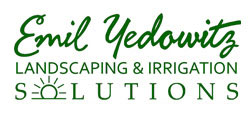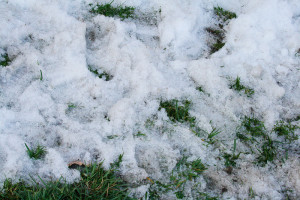Winter can really take a toll on your lawn sometimes. Your grass and plants are subjected to freezing temperatures and otherwise snowy conditions. Diseases like snow mold creep in. Accidents can happen where you end up with snow plow damage. Once spring hits, you may likely be able to repair the damage from all of these problems, so now is the time to make a task list of what will need to be done.
On a day when the snow has (at least temporarily) melted, take a walk around your lawn. Bring at least a basic sketch of your yard so that you can take notes. A camera can also be helpful. Check for any spots that seem to be problematic and note them on your paper, along with possible causes and the steps needed to fix it.
If you have snow plow damage, you may be able to fix it by adding in soil to make any holes level and reseeding in the spring. If you notice clumps of grass, you may have a problem with snow molds. Part of the treatment for this is a good spring raking and removing the clumps.
Once you have walked over your yard, calculate how much grass seed that you will need to sow. The exact amount will depend on the type of seed that you use (which will likely be helpfully placed on the bag’s label) and the extent of the damage.Order a bit extra to account for seed that fails to germinate and spots that didn’t survive. Another possibility is using pieces of sod if you have several spots in need of repair.
Do you have any other ways that you prepare for spring cleanups?
Image by shaire productions under a Flickr Creative Commons Attribution License



